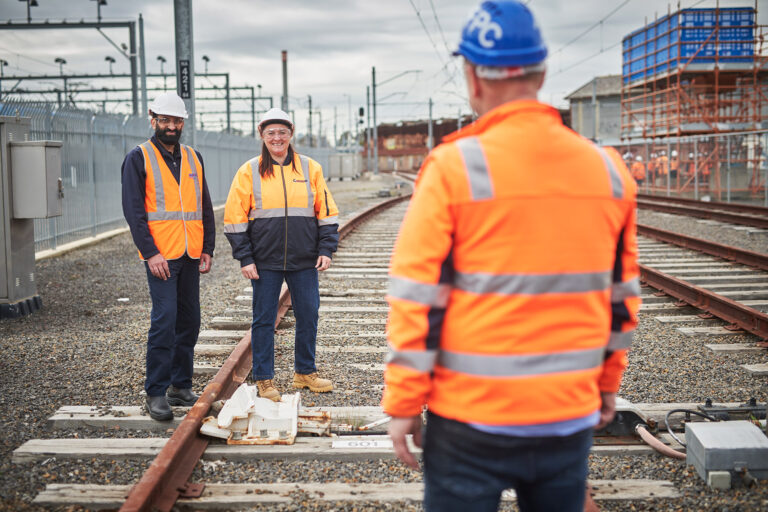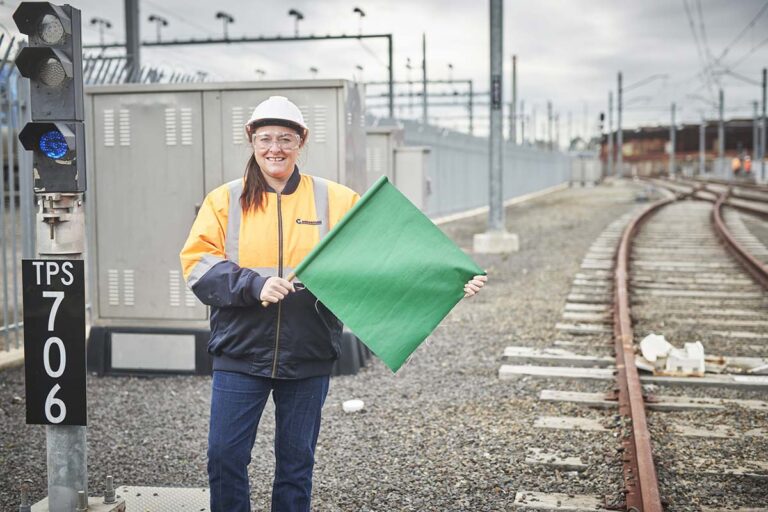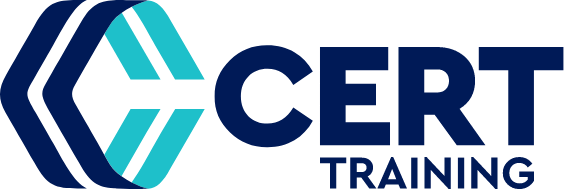How to Get a Scaffolding Ticket
With infrastructure and construction works ramping up across Australia, scaffolders continue to be in high demand. While most people associate scaffolding with general construction, scaffolders are also a critical part of rail infrastructure projects, including bridge upgrades, station construction, and overhead line work. If you’re considering this career path, the first step is getting your scaffolding ticket, which is required to operate legally and safely.
Scaffolders require detailed knowledge and skill sets to operate. Building scaffolding the right way is completely safe, but for the inexperienced, it can be dangerous. Not only for them, but also for others working on those construction sites, and the general public too.
States across Australia require scaffolders to obtain the appropriate scaffolding ticket, formally known as a High Risk Work Licence (HRWL), through adequate training before they can operate.
We’ve answered some of the major questions we get from those wanting to enter the scaffolding and construction industries – including how to get a scaffolding ticket and how you can prepare for rail-based scaffolding work with industry-specific induction and safety training.
When do you need a scaffolding ticket?
A High Risk Work Licence (HRWL) is required for high-risk roles such as dogging, rigging, operating a forklift, and erecting scaffolding where there’s a risk of falling more than four metres. Individuals must possess the appropriate HRWL before performing high-risk work.
There are three levels of scaffolding HRWLs, each tied to specific training courses:
- Basic Scaffolding (SB) – This covers tasks like working with basic prefabricated scaffolds and barrow hoists. To apply for this class of licence, you must complete a recognised Licence to Erect, Alter and Dismantle Scaffolding Basic Level course. If you’re just starting out, the basic scaffolding simple process makes it an accessible entry point into the industry.
- Intermediate Scaffolding (SI) – This level covers basic scaffolding work plus more complex work such as cantilevered scaffolds and work platforms. To qualify, you need to complete a Licence to Erect, Alter and Dismantle Scaffolding Intermediate Level course.
- Advanced Scaffolding (SA) – This covers the most complex systems, including suspended scaffolds and cantilevered hoists. Earning this level of licence requires completion of the Licence to Erect, Alter and Dismantle Scaffolding Advanced Level training.
To obtain one of these licences, you must complete an accredited training course that matches the licence class you’re seeking via a registered training organisation. Upon completion, you’ll receive a Statement of Attainment, which is used to apply for your HRWL through the relevant state or territory authority (such as WorkSafe WA or SafeWork NSW).
How high can you build a scaffold without a scaffolding licence?
In most states and territories, including New South Wales, it’s illegal to erect scaffolding over four metres high – or where a fall risk of over four metres exists – without holding the relevant scaffolding HRWL. Doing so can lead to significant penalties and on-the-spot fines.
How to get your scaffolding ticket?
To get a scaffolding ticket in Australia, you’ll need to follow a nationally recognised process that ensures you’re trained and assessed for safety and competency. This is essential for anyone seeking to work in scaffolding across construction or rail settings.
- Complete the required training through a Registered Training Organisation (RTO) that offers the relevant scaffolding HRWL course. You’ll need to enrol in the appropriate level depending on your intended scope of work:
- Licence to Erect, Alter and Dismantle Scaffolding Basic Level – SB (Basic Scaffolding Licence)
- Licence to Erect, Alter and Dismantle Scaffolding Intermediate Level – SI (Intermediate Scaffolding Licence)
- Licence to Erect, Alter and Dismantle Scaffolding Advanced Level – SA (Advanced Scaffolding Licence)
By progressing through each level of scaffolding qualification, you expand your capability to work on a wider range of projects and increase your employment opportunities across construction and rail industries.
- Demonstrate your competency through both theory and practical assessment. The competency process is designed to confirm that you can safely perform scaffolding duties in line with national safety standards.
- Meet important language, literacy and numeracy (LLN) requirements. These are often assessed at the start of your course to ensure you can follow instructions, interpret safety signs, and complete documentation correctly – all essential skills for working in high-risk environments.
- Attain Verification Certificate or Statement of Attainment upon successful completion of your training and assessment. This certificate is required to apply for your scaffolding HRWL.
- Apply for your HRWL through your local state or territory safety regulator.
Read the official application guide here.
What will I learn in a scaffolding course?
Accredited scaffolding training covers core skills across the different licence levels, including:
- Erecting, altering and dismantling scaffolding
- Planning and preparing scaffolding jobs
- Inspecting scaffold and equipment
- Appropriate communication methods and equipment
- Performing tasks using lifting techniques
- Tagging defective scaffolds and equipment
How long does it take to get a scaffold ticket?
The time it takes to get a scaffolding ticket (High Risk Work Licence) depends on the level of scaffolding work you’re pursuing. For the licence to erect, alter and dismantle scaffolding basic level, the course typically takes around five days with a registered training organisation.
Each progressive level requires completion of the previous level and additional training time, including language, literacy and numeracy (LLN) assessments and a formal competency process.
Scaffolding in the Rail Industry
Scaffolding is a vital component of major rail infrastructure projects, used to access elevated structures, protect work zones, and support other trades.
Scaffolders are frequently required in the rail industry for:
- Station upgrades
- Bridge and tunnel works
- Overhead wiring installation
- Signal and platform maintenance
Because these roles occur in rail corridors or near active rail lines, scaffolders must often complete rail-industry-specific induction training, hold a valid Rail Industry Worker (RIW) card, and complete a rail medical assessment.
This is where CERT can help. CERT provides the safety and induction training required to access rail sites. Our nationally recognised courses, such as Safely Access the Rail Corridor and rail medicals, can support your progression into rail-based roles.
If your goal is to work on major rail infrastructure projects as a scaffolder, CERT can help you get rail-site ready to complement your scaffolding licence training.
As a specialist rail training provider, CERT delivers nationally recognised, entry-level courses across five states to help you build a safe and successful career in rail.
CERT can guide you through the next stage of your journey:
- Introduction to Rail – A helpful starting point if you’re new to the industry. This course explains how rail systems work, the types of roles available, and key safety expectations.
- Safely Access the Rail Corridor (SARC) – A critical course for anyone who needs to access or work within the rail corridor. It’s often required before applying for a Rail Industry Worker (RIW) card.
- Rail Medical (Category 1, 2 or 3) – CERT also helps you meet the medical fitness requirements for rail roles, depending on the job you’re aiming for.
If you’re unsure where to begin, the CERT team can help you map out the right training pathway based on the type of rail job you want, your location, and your experience level.
Final Thoughts
Whether you’re just starting your career or looking to move into specialised roles, scaffolding can be a rewarding and secure trade. If you’re interested in contributing to major infrastructure, including rail, it’s worth exploring how rail-industry training complements your scaffolding skills.
Speak to CERT today to learn more about your pathway into rail-based scaffolding and related roles.
To stay up to date about rail industry practices, key safety information and best practices, follow us on Facebook and LinkedIn.

RIW Card Course: Safely Access the Rail Corridor
Working close to trains is exhilarating. However, there are ongoing health and safety protocols you will need to follow to keep yourself and others safe. Hence, courses like the mandatory Safely Access the Rail Corridor (RIW card course) are important.

Improve your Safety Critical Communications
The Safety Critical Communications in the Rail Environment course is designed to develop and further increase participant’s communication and negotiation skills across the rail industry…

What is the ARTC and How can you get a NSW rail job?
For those interested in a challenging and rewarding career in freight rail, there’s plenty of opportunities around Australia. One of the largest freight operators…
